Design and Fabrication of Body-Based Interfaces (Demo of Saarland HCI Lab) This Interactivity shows live demonstrations of our lab’s most recent work on body-based interfaces. The soft, curved and deformable surface of the human body presents unique opportunities and challenges for interfaces. New form factors, materials and interaction techniques are required that move past the conventional rigid, planar and rectangular devices and the corresponding interaction […]
Posted: 15/04/2023
Under:
SparseIMU: Computational Design of Sparse IMU Layouts for Sensing Fine-Grained Finger Microgestures Abstract Gestural interaction with freehands and while grasping an everyday object enables always-available input. To sense such gestures, minimal instrumentation of the user’s hand is desirable. However, the choice of an effective but minimal IMU layout remains challenging, due to the complexity of the multi-factorial space that comprises diverse finger gestures, objects and […]
Posted: 06/10/2022
Under:
Interactive Bioplastics A DIY approach for composing soft interactive devices from bio-based and bio-degradable materials. Abstract Designers and makers are increasingly interested in leveraging bio-based and bio-degradable “do-it-yourself” (DIY) materials for sustainable prototyping. Their self-produced bioplastics possess compelling properties such as self-adhesion but have so far not been functionalized to create soft interactive devices, due to a lack of DIY techniques for the fabrication of […]
Posted: 18/08/2022
Under:
Next Steps in Epidermal Computing Opportunities and Challenges For Soft On-Skin Devices Abstract Skin is a promising interaction medium and has been widely explored for mobile, and expressive interaction. Recent research in HCI has seen the development of Epidermal Computing Devices: ultra-thin and non-invasive devices which reside on the user’s skin, offering intimate integration with the curved surfaces of the body, while having physical and […]
Posted: 12/04/2022
Under:
Computational Design and Optimization of Electro-Physiological Sensors Abstract Electro-physiological sensing devices are becoming increasingly common in diverse applications. However, designing such sensors in compact form factors and for high-quality signal acquisition is a challenging task even for experts, is typically done using heuristics, and requires extensive training. Our work proposes a computational approach for designing multi-modal electro-physiological sensors. By employing an optimization-based approach alongside an […]
Posted: 03/11/2021
Under:
SoloFinger Robust Microgestures while Grasping Everyday Objects Using microgestures, prior work has successfully enabled gestural interactions while holding objects. Yet, these existing methods are prone to false activations caused by natural finger movements while holding or manipulating the object. We address this issue with SoloFinger, a novel concept that allows design of microgestures that are robust against movements that naturally occur during primary activities. Using […]
Posted: 05/02/2021
Under:
PhysioSkin Rapid Fabrication of Skin-Conformal Physiological Interfaces Advances in rapid prototyping platforms have made physiological sensing accessible to a wide audience. However, off-the-shelf electrodes commonly used for capturing biosignals are typically thick, non-conformal and do not support customization. We present PhysioSkin, a rapid, do-it-yourself prototyping method for fabricating custom multi-modal physiological sensors, using commercial materials and a commodity desktop inkjet printer. It realizes ultrathin skin-conformal […]
Posted: 29/07/2020
Under:
Like a Second Skin Understanding How Epidermal Devices Affect Human Tactile Perception The emerging class of epidermal devices opens up new opportunities for skin-based sensing, computing, and interaction. Future design of these devices requires an understanding of how skin-worn devices affect the natural tactile perception. In this study, we approach this research challenge by proposing a novel classification system for epidermal devices based on flexural […]
Posted: 02/09/2019
Under:
Multi-Touch Skin A Thin and Flexible Multi-Touch Sensor for On-Skin Input Skin-based touch input opens up new opportunities for direct, subtle, and expressive interaction. However, existing skinworn sensors are restricted to single-touch input and limited by a low resolution. We present the first skin overlay that can capture high-resolution multi-touch input. Our main contributions are: 1) Based on an exploration of functional materials, we present […]
Posted: 02/09/2018
Under:
SkinMarks Enabling Interactions on Body Landmarks Using Conformal Skin Electronics The body provides many recognizable landmarks due to the underlying skeletal structure and variations in skin texture, elasticity, and color. The visual and spatial cues of such body landmarks can help in localizing on-body interfaces, guide input on the body, and allow for easy recall of mappings. Our main contribution are SkinMarks, novel skin-worn I/O […]
Posted: 02/09/2017
Under:
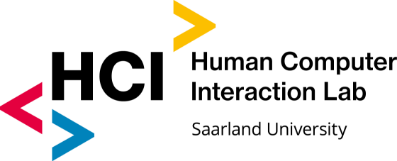
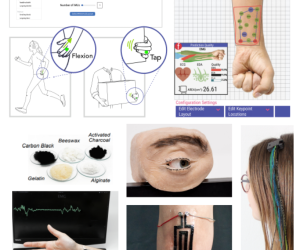
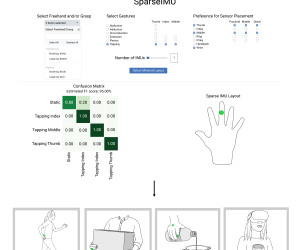
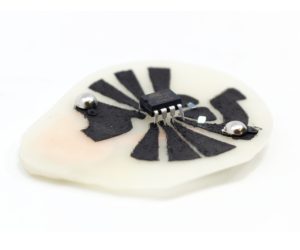

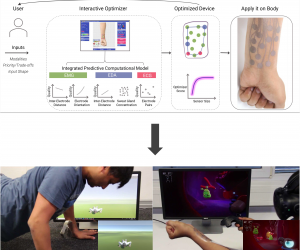
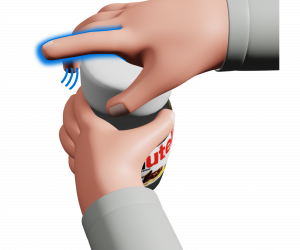





Recent Comments